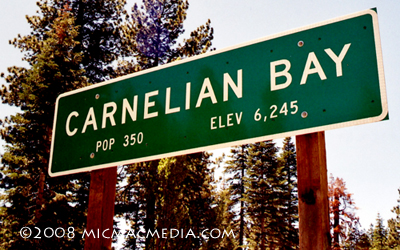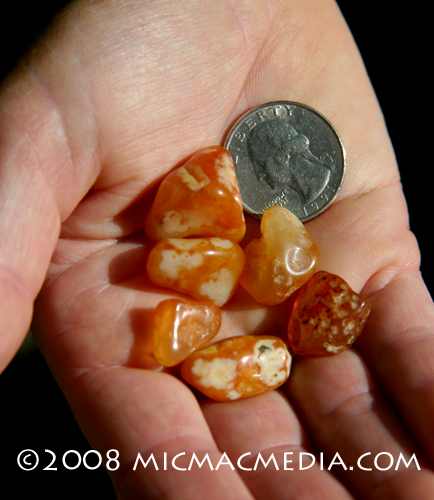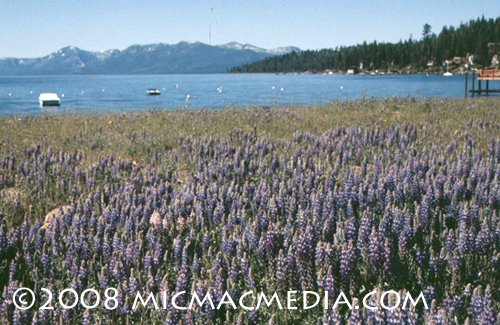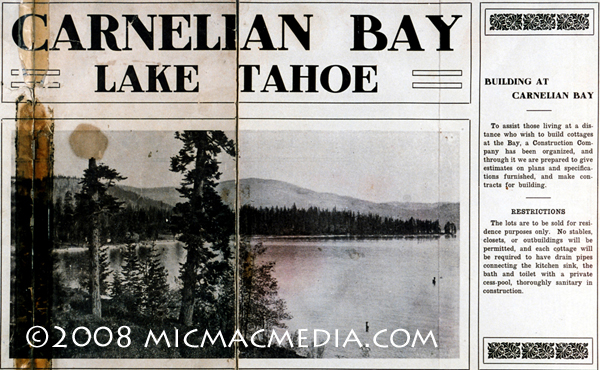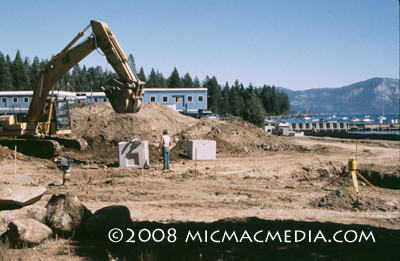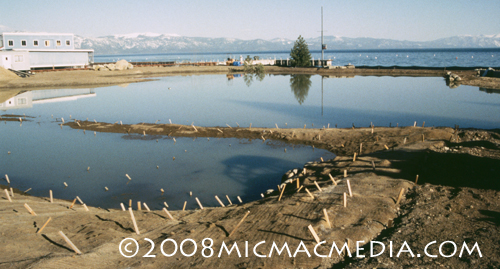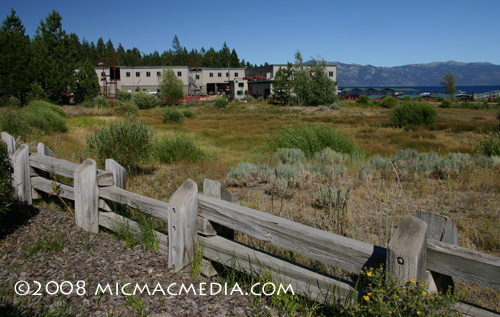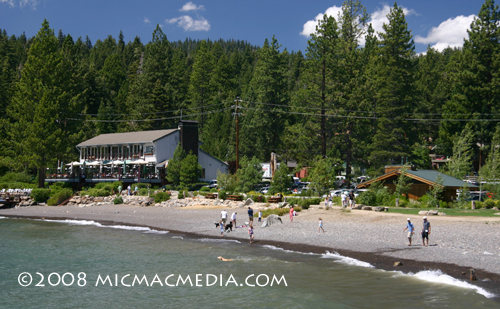 |
|
|
Follow Mark on Facebook for more stories |
||
 |
|||||
|
Tahoe Nugget #150 Carnelian Bay is Home I moved to Carnelian Bay, located on Tahoe's North Shore, in May 1983 just as the melting snowpack from the Big Winter of '83 was causing flood damage throughout the Tahoe Basin. My small mountain cabin with a knotty pine interior is old (built in 1927), but it's cozy and handles the snow well. It's a nice spot. Initially called "Cornelian Bay" for the pretty, semi-precious red and yellow carnelian stones found on its beaches (see photo #1), this small bay was renamed Carnelian Bay in the 1880s. A popular pastime for visitors was to fill their pockets with the translucent, jewel-like stones that littered the beach. Even today, a sharp-eyed person can still find colorful carnelians or agates along the shoreline here. Carnelian Bay was an important summer camping spot for the Washoe Indian Tribe, where they would fish, hunt ground squirrels, gather seeds, and collect mushrooms and berries. In 1871, Dr. George Bourne established a health spa in Carnelian Bay. Dr. Bourne, who had run successful health clinics in San Francisco and Sacramento, decided that Tahoe's pleasant summer climate and beneficial sun and healing waters would do wonders for his patients. So he opened "Dr. Bourne's Hygienic Establishment" where he prescribed "pure mountain air, fresh vegetable juices and abstinence from stimulants, hot and cold mineral baths and trout fishing for a long and healthy life." Dr. Bourne may have been on to something. Nick Flick was the youngest of the three Flick brothers who lived in Carnelian Bay for decades. One interesting fact about the Flick brothers is that they were all born on Christmas Day (1841, 1847 & 1851) and they all died in the month of April. When Nick was interviewed in 1935, at the ripe age of 74, he said, "Yessir, we settled right here on Carnelian Bay, and outside of falling off wagons, we haven't had a sick day since." In 1909, the Flick brothers sold their lakefront property so Carnelian Bay could be developed into a summer residence resort. Every home in the subdivision was promised piped in water from a mountain spring in the hills above. The new 81-acre Carnelian Bay resort, dubbed the Tahoe Country Club, was designed for the common man, with relatively small, inexpensive lots, sold only to buyers who promised to promptly build a house, cottage or bungalow for their own use. Prices ranged from $125 for a lot a bit up the hill (with a view) to $300 or $400 for a lakefront location. Seventy-five lots sold quickly and by 1914, there were more than 45 homes established near the natural wetlands where the developers planned to dig an inland harbor and build a hotel. The country club concept failed, but "common folk" continued to build cabins and cottages in the subdivision. In the mid 1990s, the California Tahoe Conservancy along with other government agencies began projects to restore certain Tahoe wetlands to reduce sediments entering the lake that were reducing Tahoe's famed water clarity. Since 1900, development in the Tahoe Basin has destroyed more than 75% of the original wetlands within the basin. In Carnelian Bay, several thousand yards of landfill that covered the historic wetlands were removed. Subsequent excavation exposed the rich native soil below, which was then carefully graded to resemble a more natural wetland. During the spring runoff, the small basins pond with water and provide water for waterfowl and wildlife before drying out by summer into a meadow. Wetland plant species have returned to reestablish a functioning meadow environment. It's a win-win situation. Nature gets a helping hand and the lake's clarity is protected for future generations. Photo #1: Welcome home sign.
|
|||||
|

